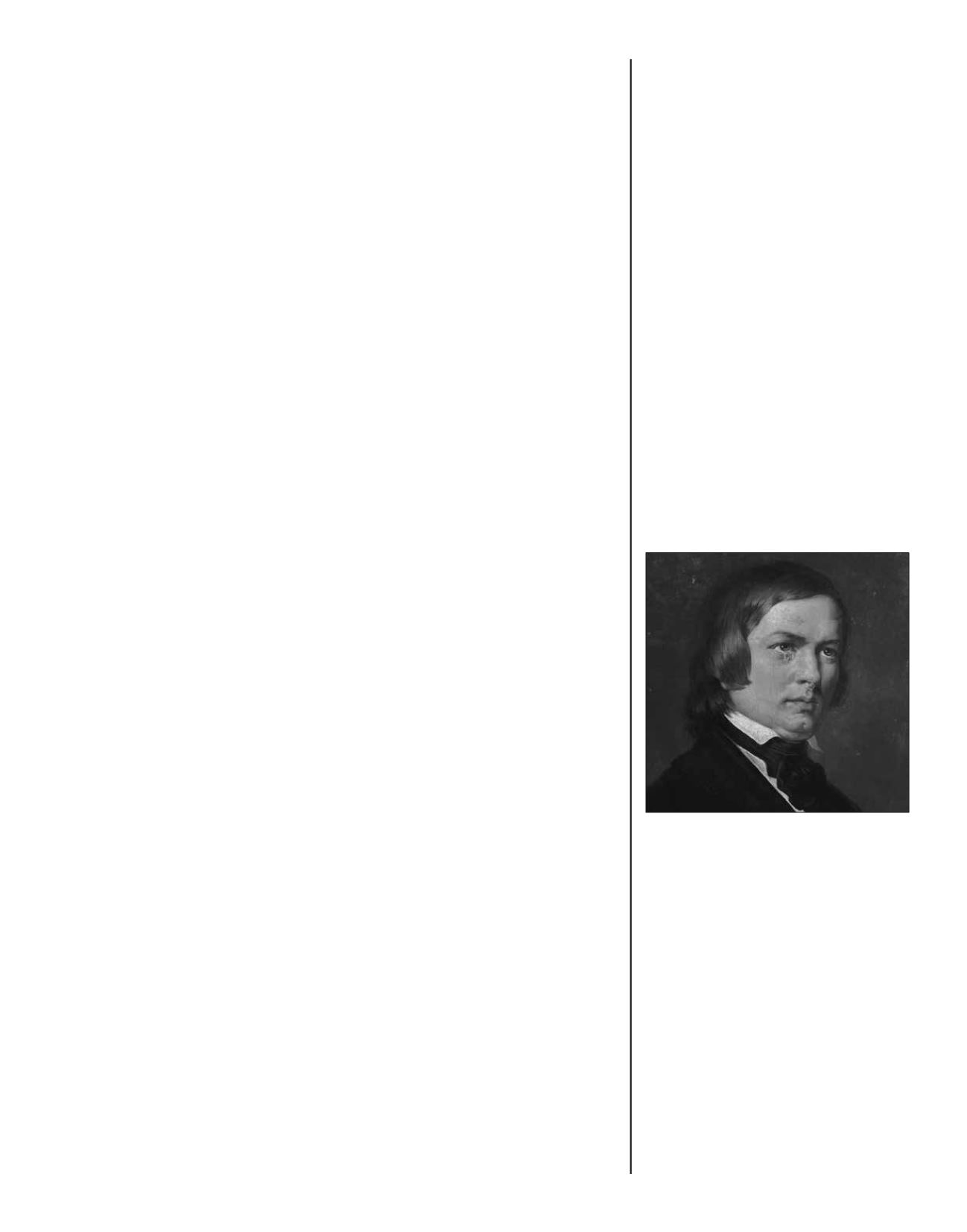
7:30 PM FRIDAY, JUNE 8, 2018
MARTIN THEATRE
VLADIMIR FELTSMAN,
piano
SCHUMANN
Arabeske
SCHUMANN
Kreisleriana
Äußerst bewegt
Sehr innig und nicht zu rasch
Sehr aufgeregt
Sehr langsam
Sehr lebhaft
Sehr langsam
Sehr rasch
Schnell und spielend
–Intermission–
CHOPIN
Four Mazurkas, op. 6
*
No. 1 in F-sharp minor
No. 2 in C-sharp minor
No. 3 in E major
No. 4 in E-flat minor
Mazurka in G-sharp minor, op. 33, no. 1
Mazurka in D-flat major, op. 30, no. 3
*
Mazurka in C-sharp minor, op. 30, no. 4
Mazurka in B minor, op. 33, no. 4
Mazurka in A minor, op. 17, no. 4
Mazurka in C major, op. 24, no. 2
Four Mazurkas, op. 68
No. 1 in C major *
No. 2 in A minor *
No. 3 in F major *
No. 4 in F minor
CHOPIN
Ballade No. 3
*
First performance at Ravinia
Ravinia expresses its appreciation for the generous support of
Sponsor
Sharon and Eden Martin
.
ROBERT SCHUMANN (1810–56)
Arabeske
, op. 18
Schumann struggled through a difficult sep-
aration from his young fiancée, Clara Wieck,
in 1838. He had departed Leipzig to spend the
winter months in Vienna negotiating with a new
publisher for his magazine
Neue Zeitschrift für
Musik
and to search for a suitable apartment
where he and Clara would live as husband and
wife. Terrible depression set in, and he even
considered suicide. Despite his melancholy,
Schumann experienced a wondrous creative
awakening.
Compositions from this period included three
pieces written in a simpler, more melodious
style than other recent works. These were the
Arabeske
, op. 18;
Blümenstück
, op. 19; and
Hu-
moreske
, op. 20. Schumann himself described
this trio of works as “lighter and more femi-
nine.” Others noticed a stylistic change as well.
Carl Koßmaly—a composer, critic, and original
member of Schumann’s
Davidsbund
(Society
of David)—published the first comprehensive
review of Schumann’s music in the
Allgemeine
Musikalische Zeitung
(1844) in which he praised
this return to “melodic flow, clarity, and songlike
attitude.”
The
Arabeske
, op. 18, is a seven-minute ron-
do movement. Its C-major refrain presents a
charming, memorable theme with consider-
able internal repetition. The first episode of-
fers a brooding Romantic melody in minor.
Schumann restates the refrain then introduces
additional thematic contrast with another mi-
nor-key theme containing a rhythmic motive
from the refrain. The refrain is heard a final
time. A coda, apparently unrelated to previous
melodic material, concludes in an introspective
mood.
Kreisleriana
, op. 16
Schumann wrote a letter on September 13, 1837,
to Friedrich Wieck asking for permission to
marry his daughter Clara. Wieck, Schumann’s
Robert Schumann, by Vincenzo Busciolano
JUNE 1 – JUNE 10, 2018 | RAVINIA MAGAZINE
105








